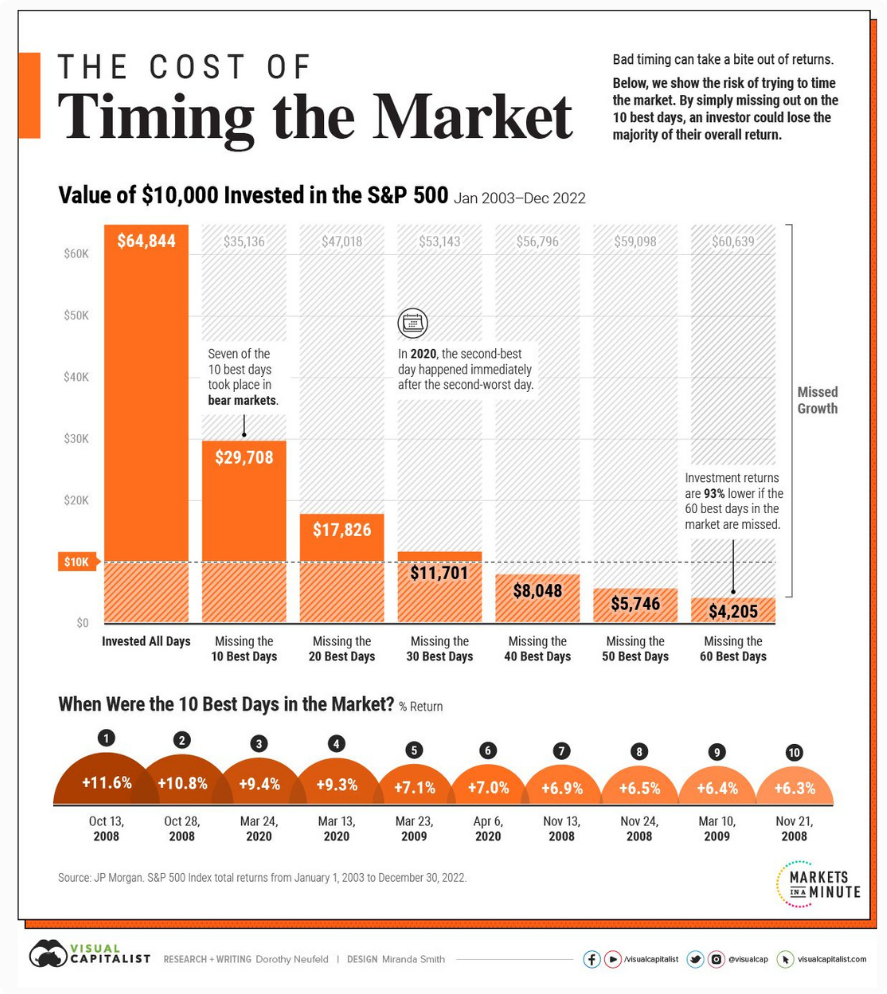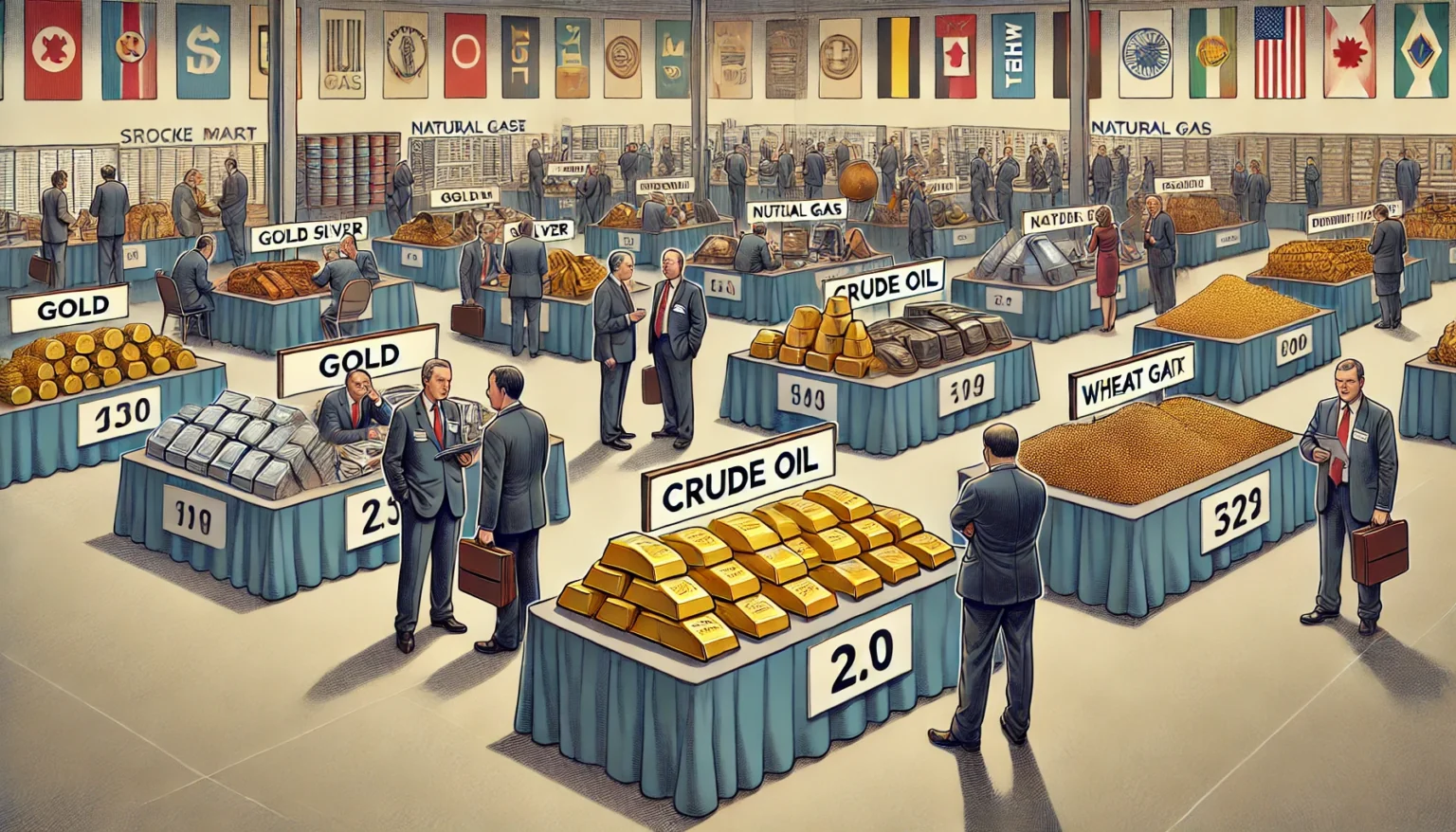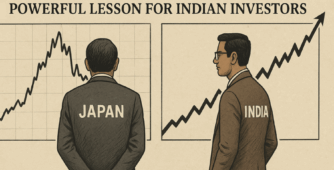Trying to Time the Market
Many investors believe they can enter and exit the market at the right moments to earn more profit. This idea of “timing the market” sounds smart, but in reality, it often leads to lost opportunities. A study based on the S&P 500 over a 20-year period from January 2003 to December 2022 shows how missing just a few of the best days in the market can drastically reduce your returns. (see the image below)

If someone had invested $10,000 in January 2003 and stayed invested, that amount would have grown to around $64,844 by the end of 2022. But if they had missed only ten of the best-performing days in that entire period, their returns would have fallen sharply.
Missing the Best Days Can Hurt
The difference is shocking. Missing ten best days would bring down the $64,000 to only $29,000. Missing twenty best days would reduce it to $17,000, thirty best days to around $11,000, and forty best days would even result in losses. If an investor missed sixty best days in those twenty years, their return would be 93% lower compared to someone who stayed fully invested. This shows that even a few missed days can destroy years of growth.
Why the Best Days Often Come After the Worst
Many people think they can avoid bad market crashes by exiting at the right time. But the truth is that the best days often come right after the worst ones. For example, in 2008 during the financial crisis, some of the strongest recovery days with gains of 6% to 11% happened right after the biggest falls. Similarly, during the COVID crash in March 2020, the market saw several strong up days within a few weeks. Anyone who sold in panic and stayed out missed these big rebound days that played a major role in long-term gains.
The Problem with “Sitting on the Sidelines”
You may often hear experts say, “Stay on the sidelines until things get clear.” But markets are never completely clear. If buyers and sellers always agreed, there would be no market movement at all. Waiting for clarity only leads to missed chances. The idea that one can safely wait and then jump back in is a myth. Staying invested is the only way to make sure you are part of the best recovery phases that usually follow major downturns.
Stay Invested, Stay Disciplined
The key is not to stay invested in random stocks but in professionally managed strategies such as mutual funds, PMS, AIFs, or smallcases where the manager automatically shifts from weak to strong stocks. You don’t need to pick or average the same few stocks yourself. The main rule is simple — don’t miss the best days. The only way to ensure that is to stay invested, stay patient, and let time work in your favor.










